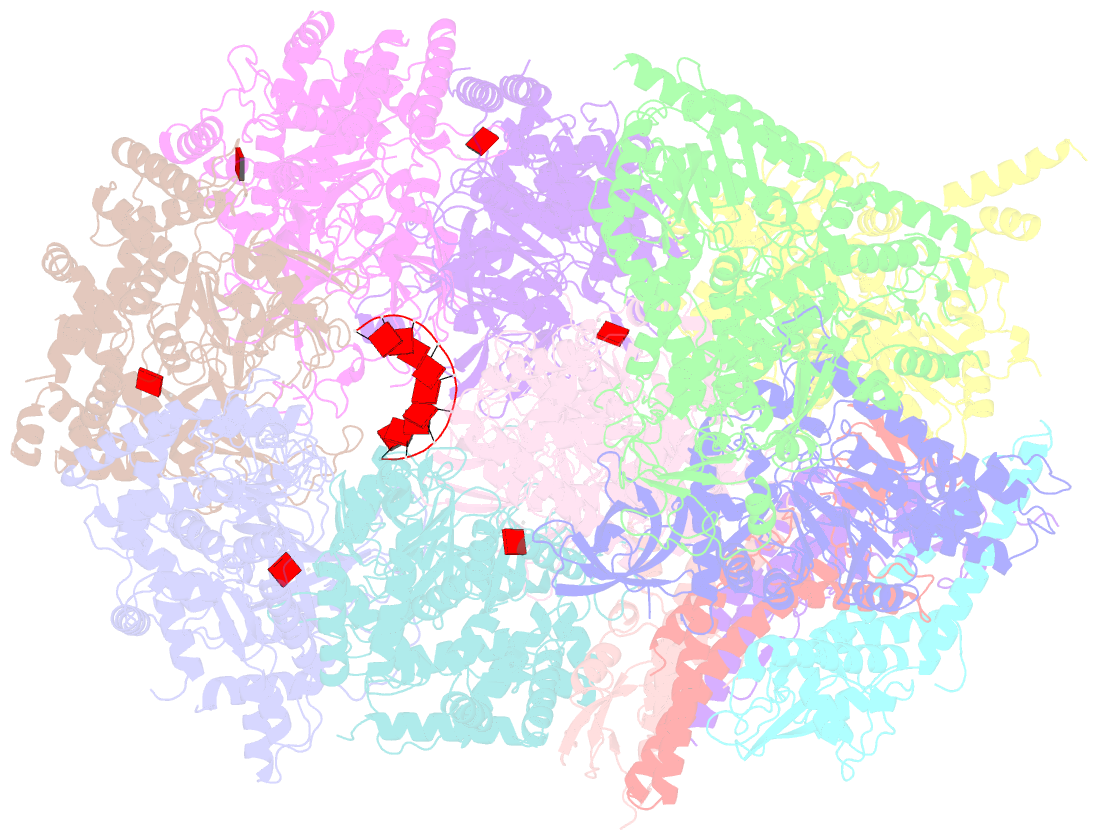Summary information and primary citation
- PDB-id
- 8p62; SNAP-derived features in text and JSON formats;
DNAproDB
- Class
- replication
- Method
- cryo-EM (3.9 Å)
- Summary
- S. cerevisiae ssDNA-scmge after DNA replication initiation
- Reference
- Henrikus SS, Gross MH, Willhoft O, Puhringer T, Lewis JS, McClure AW, Greiwe JF, Palm G, Nans A, Diffley JFX, Costa A (2024): "Unwinding of a eukaryotic origin of replication visualized by cryo-EM." Nat.Struct.Mol.Biol., 31, 1265-1276. doi: 10.1038/s41594-024-01280-z.
- Abstract
- To prevent detrimental chromosome re-replication, DNA loading of a double hexamer of the minichromosome maintenance (MCM) replicative helicase is temporally separated from DNA unwinding. Upon S-phase transition in yeast, DNA unwinding is achieved in two steps: limited opening of the double helix and topological separation of the two DNA strands. First, Cdc45, GINS and Polε engage MCM to assemble a double CMGE with two partially separated hexamers that nucleate DNA melting. In the second step, triggered by Mcm10, two CMGEs separate completely, eject the lagging-strand template and cross paths. To understand Mcm10 during helicase activation, we used biochemical reconstitution with cryogenic electron microscopy. We found that Mcm10 splits the double CMGE by engaging the N-terminal homo-dimerization face of MCM. To eject the lagging strand, DNA unwinding is started from the N-terminal side of MCM while the hexamer channel becomes too narrow to harbor duplex DNA.





